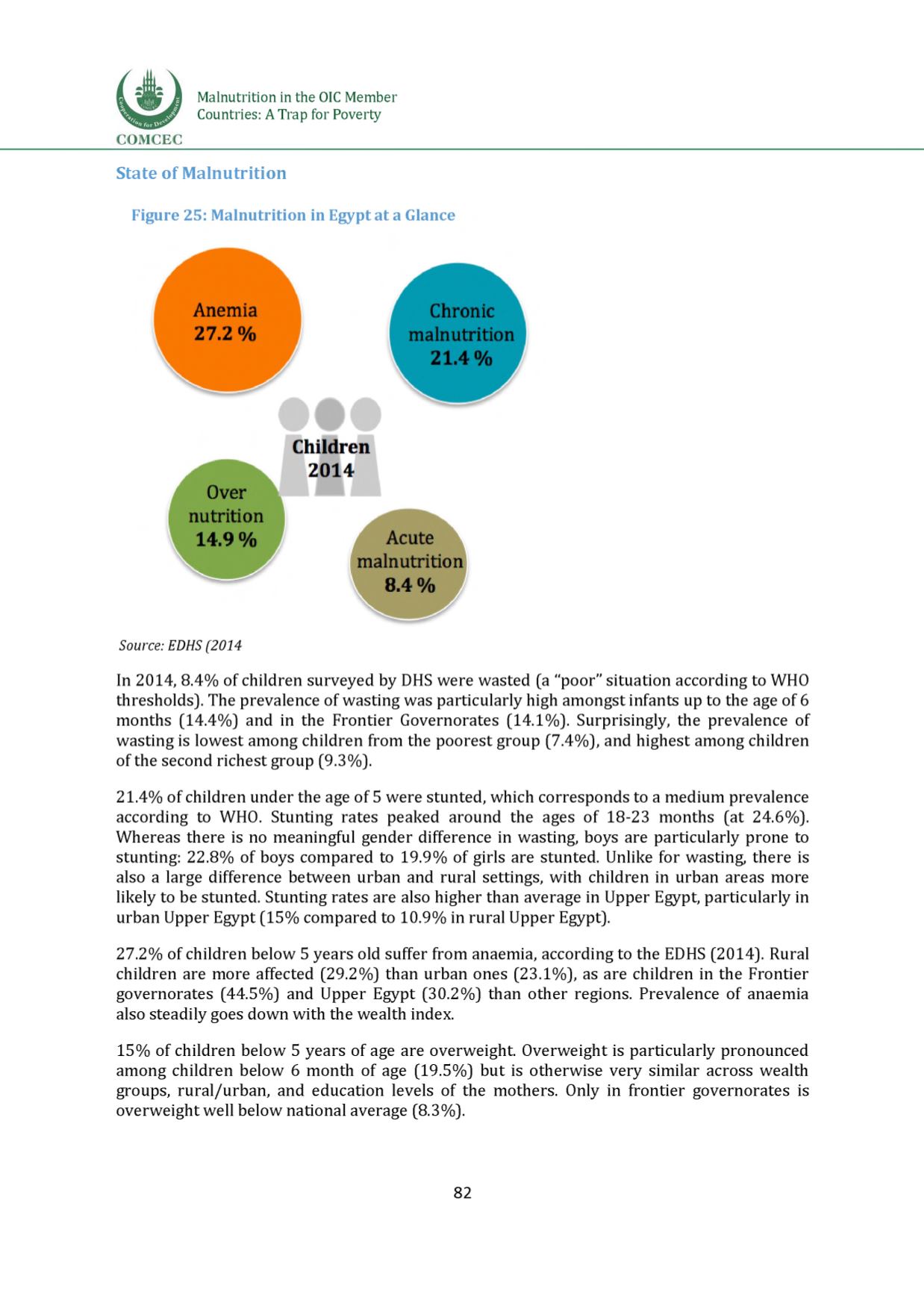

Anemia
27 .2 %
Children
2 0 1 4
Over
nutrition
14 .9 %
Acute
malnutrition
8 .4 %
Malnutrition in the OIC Member
Countries: A Trap for Poverty
State of Malnutrition
Chronic
malnutrition
2 1 . 4 %
Figure 25: Malnutrition in Egypt at a Glance
Source: EDHS (2014
In 2014, 8.4% of children surveyed by DHS were wasted (a “poor” situation according to WHO
thresholds]. The prevalence of wasting was particularly high amongst infants up to the age of
6
months (14.4%) and in the Frontier Governorates (14.1%). Surprisingly, the prevalence of
wasting is lowest among children from the poorest group (7.4%), and highest among children
of the second richest group (9.3%).
21.4% of children under the age of 5 were stunted, which corresponds to a medium prevalence
according to WHO. Stunting rates peaked around the ages of 18-23 months (at 24.6%).
Whereas there is no meaningful gender difference in wasting, boys are particularly prone to
stunting: 22.8% of boys compared to 19.9% of girls are stunted. Unlike for wasting, there is
also a large difference between urban and rural settings, with children in urban areas more
likely to be stunted. Stunting rates are also higher than average in Upper Egypt, particularly in
urban Upper Egypt (15% compared to 10.9% in rural Upper Egypt).
27.2% of children below 5 years old suffer from anaemia, according to the EDHS (2014). Rural
children are more affected (29.2%) than urban ones (23.1%), as are children in the Frontier
governorates (44.5%) and Upper Egypt (30.2%) than other regions. Prevalence of anaemia
also steadily goes down with the wealth index.
15% of children below 5 years of age are overweight. Overweight is particularly pronounced
among children below
6
month of age (19.5%) but is otherwise very similar across wealth
groups, rural/urban, and education levels of the mothers. Only in frontier governorates is
overweight well below national average (8.3%).
82
















